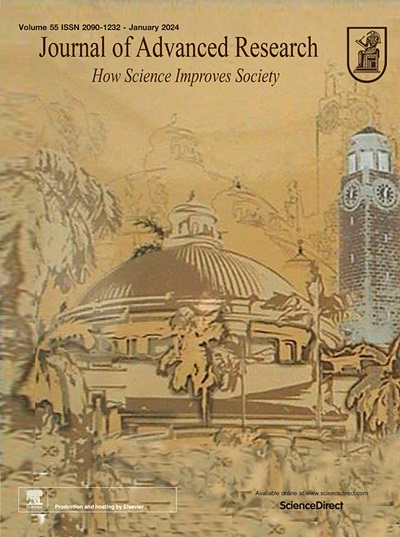Cell-specific Nav1.6 knockdown reduced astrocyte-derived Aβ by reverse Na+-Ca2+ transporter-mediated autophagy in alzheimer-like mice
IF 11.4
1区 综合性期刊
Q1 MULTIDISCIPLINARY SCIENCES
引用次数: 0
Abstract
Introduction
Nav1.6 is closely related to the pathology of Alzheimer’s Disease (AD), and astrocytes have recently been identified as a significant source of β-amyloid (Aβ). However, little is known about the connection between Nav1.6 and astrocyte-derived Aβ.
Objective
This study explored the crucial role of Nav1.6 in mediated astrocyte-derived Aβ in AD and knockdown astrocytic Nav1.6 alleviates AD progression by promoting autophagy and lysosome-APP fusion.
Methods
A mouse model for astrocytic Nav1.6 knockdown was constructed to study the effects of astrocytic Nav1.6 on amyloidosis. The role of astrocytic Nav1.6 on autophagy and lysosome-APP(amyloid precursor protein) fusion was used by transmission electron microscope, immunostaining, western blot and patch clamp. Glial cell activation was detected using immunostaining. Neuroplasticity and neural network were assessed using patch-clamp, Golgi stain and EEG recording. Behavioral experiments were performed to evaluate cognitive defects.
Results
Astrocytic Nav1.6 knockdown reduces amyloidosis, alleviates glial cell activation and morphological complexity, improves neuroplasticity and abnormal neural networks, as well as promotes learning and memory abilities in APP/PS1 mice. Astrocytic Nav1.6 knockdown reduces itself-derived Aβ by promoting lysosome- APP fusion, which is related to attenuating reverse Na+-Ca2+ exchange current thus reducing intracellular Ca2+ to facilitate autophagic through AKT/mTOR/ULK pathway.
Conclusion
Our findings unveil the crucial role of astrocyte-specific Nav1.6 in reducing astrocyte-derived Aβ, highlighting its potential as a cell-specific target for modulating AD progression.

通过逆转 Na+-Ca2+ 转运体介导的自噬,细胞特异性 Nav1.6 基因敲除可减少阿尔茨海默病样小鼠星形胶质细胞衍生的 Aβ。
简介Nav1.6与阿尔茨海默病(AD)的病理学密切相关,而星形胶质细胞最近被确定为β淀粉样蛋白(Aβ)的重要来源。然而,人们对 Nav1.6 与星形胶质细胞衍生的 Aβ 之间的联系知之甚少:本研究探讨了Nav1.6在AD中介导星形胶质细胞衍生Aβ的关键作用,以及通过促进自噬和溶酶体-APP融合敲除星形胶质细胞Nav1.6缓解AD进展:方法:为了研究星形胶质细胞Nav1.6对淀粉样变性的影响,我们构建了一个敲除星形胶质细胞Nav1.6的小鼠模型。通过透射电子显微镜、免疫染色、Western 印迹和膜片钳检测星形胶质细胞 Nav1.6 对自噬和溶酶体-APP(淀粉样前体蛋白)融合的作用。免疫染色法检测神经胶质细胞的活化。利用膜片钳、高尔基染色和脑电图记录评估神经可塑性和神经网络。行为实验用于评估认知缺陷:结果:敲除星形胶质细胞Nav1.6可减少淀粉样变性,缓解胶质细胞活化和形态复杂性,改善神经可塑性和异常神经网络,并提高APP/PS1小鼠的学习和记忆能力。星形胶质细胞Nav1.6敲除可通过促进溶酶体-APP融合减少自身衍生的Aβ,这与减弱反向Na+-Ca2+交换电流有关,从而减少细胞内Ca2+,通过AKT/mTOR/ULK途径促进自噬:我们的研究结果揭示了星形胶质细胞特异性 Nav1.6 在减少星形胶质细胞衍生的 Aβ 中的关键作用,凸显了其作为细胞特异性靶点调节 AD 进展的潜力。
本文章由计算机程序翻译,如有差异,请以英文原文为准。
求助全文
约1分钟内获得全文
求助全文
来源期刊

Journal of Advanced Research
Multidisciplinary-Multidisciplinary
CiteScore
21.60
自引率
0.90%
发文量
280
审稿时长
12 weeks
期刊介绍:
Journal of Advanced Research (J. Adv. Res.) is an applied/natural sciences, peer-reviewed journal that focuses on interdisciplinary research. The journal aims to contribute to applied research and knowledge worldwide through the publication of original and high-quality research articles in the fields of Medicine, Pharmaceutical Sciences, Dentistry, Physical Therapy, Veterinary Medicine, and Basic and Biological Sciences.
The following abstracting and indexing services cover the Journal of Advanced Research: PubMed/Medline, Essential Science Indicators, Web of Science, Scopus, PubMed Central, PubMed, Science Citation Index Expanded, Directory of Open Access Journals (DOAJ), and INSPEC.
 求助内容:
求助内容: 应助结果提醒方式:
应助结果提醒方式:


